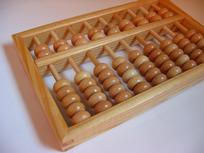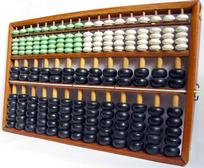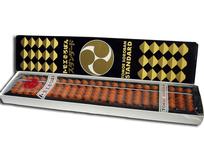What was the earliest counting device?
- human hand
- a pile of pebbles
- a pile of twigs
What is a counting board?
- a piece of wood, stone, or metal with carved grooves or painted lines between which beads, pebbles or metal discs were moved
- a piece of wood that was written on with dirt or chalky rocks
- a device having a frame that holds rods with freely-sliding beads mounted on them.
What was the purpose of the abacus?
- to keep track of numbers when calculating in your head
- to calculate large numbers
- a child's toy
What sorts of calculations can the abacus be used for?
- all of these
- none of these
- addition
- subtraction
- multiplication
- division
What is the name of the "oldest surviving counting board"?
- Salamis Tablet
- Plutarch Tablet
- Stylus Tablet
- Athens Tablet
Where and when did today's abacus first appear?
- 1200 AD in China
- 1700 BC in China
- 1200 AD in Rome
- 1600 AD in Greece
- 1700 BC in Rome
Who wrote the manual explaining the use of the 4-deck abacus? When was it published?
- Lee Kai-Chen; 1958 AD
- Lee Kai-Chen; 1929 AD
- Lee Van-Lee; 1967 AD
- Salamis Plutarch; 1200 AD
Which of the following is the Dilson Abacus?
-
Which of the following is the Lee Abacus?
-
Which of the following is the Tomoe Soroban Abacus?
-


